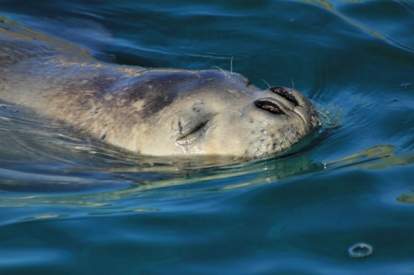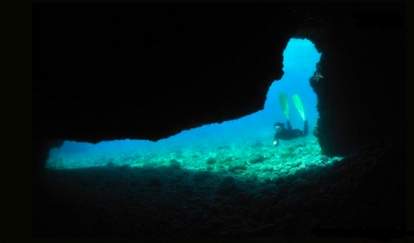
Photo 1. A Mediterranean Monk Seal, Monachus monachus (Photo by the Mediterranean
Monk Seal Group)
MONITORING THE MEDITERRANEAN MONK SEAL IN PRIMORSKO-GORANSKA COUNTY IN 2012 The Mediterranean Monk Seal was studied from January
2012 to February 2013, as part of a multi-year study conducted by the
Mediterranean Monk Seal Group, an association for nature research and
protection, in cooperation with Public Institution “Priroda”.
The study included data obtained from cameras set in caves, reports on
sightings, photo-documentation, and biological material collected. The
Mediterranean Monk Seal Group conducted research not only in Primorsko-Goranska
County, but in Istria, the central Adriatic and the southern Adriatic,
as well. The Mediterranean monk seal is an endemic species of
the Mediterranean Sea. The species was scientifically described in 1779
based on an individual from the coast of Cres Island. Today the total
population of the Mediterranean monk seal varies between 320 and 475 individuals,
most of which live in the Aegean Sea. Although it is falls into the category
of Regionally Extinct (RE) species of the Red List of Threatened Mammals
in Croatia, the Mediterranean Monk Seal has been sighted in some 30 locations
in the Adriatic over the past 30 years. All sightings of the Mediterranean Monk Seal in the marine
area of Primorsko-Goranska County from January 2012 to February 2013 were
reported from the west coast of Cres Island. There were eight sightings
altogether: in two cases the animal was seen resting on a beach, and in
the remaining six cases it was sighted swimming in the sea. In most cases
the individual was seen from a distance of some 20 metres. On 1 October
2011, a surveillance camera was set up in a cave on Cres Island. Because
of frequent visits by tourists to the cave, the camera was removed on
12 May 2012, but was put back on 19 November 2012. An analysis of the
photographs taken of Mediterranean monk seals on the west coast of Cres
Island and at Cape Kamenjak in Istria has revealed that we are dealing
with two different individuals. Such a conclusion was reached based on
a comparison of scars on the bodies and tail fin of the animals. A fact of interest regarding the Mediterranean monk seal
population in the Adriatic was recorded on 21 March 2012, when an individual
was caught on film at Cape Kamenjak in Istria between 5:47 a.m. and 12:30
p.m., while at 10:00 a.m. the same day another seal was sighted at Hvar
Island. These data lead to the conclusion that there are a number of Mediterranean
monk seals living in the Adriatic Sea and especially in the marine areas
of the Kvarner region and Istria. The results of DNA analysis of biological
samples (saliva and excrements) collected from the caves and beaches on
which the seals were staying should confirm this assumption. The results of research in 2012 make us somewhat optimistic
concerning the future of this species in the Adriatic. A precondition
to stabilizing the monk seal population in the Adriatic involves educating
citizens and tourists about the presence of this species and about how
they should behave should they find themselves in the immediate vicinity
of one of these animals. There are a few basic rules of conduct you need to adhere
to should you encounter a Mediterranean monk seal: - Should you sight a monk seal while diving or swimming in the sea,
remain still and do not approach the animal - Do not enter a sea cave in which a monk seal has been sighted
- Should you see a monk seal when entering a sea cave, retreat immediately
towards the entrance of the cave, keeping to the cave wall to enable
the animal to escape should it feel threatened - Should you sight a monk seal on a beach, the best thing to do is to
take cover, carefully observe the animal and, if possible, take photos
of it. - Should you sight a monk seal while in a boat/yacht, stop the vessel
and wait for the animal to move away - Should you sight a Mediterranean monk seal, please be sure to report
this to the Mediterranean Monk Seal Group at telephone numbers 01/4611864
or 01/4611864 or by e-mail to the following address: jasna.antolović@zg.t-com.hr
Patrik Krstinić 
Photo 2. In the Adriatic, caves with underwater entrances are places where
Mediterranean seal monks most often come to take a rest (cave on Cres
Island – Photo by Gianni Pecchiar)
|




